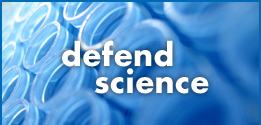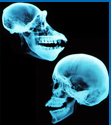The following article (below) from the New York Times reveals what for many is a shocking statistic about the current state of the U.S. education system. According to a survey of high school biology teachers recently published in Science Magazine:
--- only 28% are teaching evolution by "describ(ing) straightforwardly the evidence for evolution and explain the ways in which it is a unifying theme in all of biology"
--- 13% are explicitly advocating creationism
--- and what is called “the cautious 60 percent,” avoid controversy by endorsing neither evolution nor its unscientific alternatives. In various ways, they compromise.
But the Times article about this survey is misleading about the causes of these results, leaving out the crucial context behind these numbers: the impact of years of ongoing and vicious attacks on evolution and the teachers who teach it, especially at the high school level.
From New York Times, February 7, 2011 link to article...
On Evolution, Biology Teachers Stray From Lesson Plan
Teaching creationism in public schools has consistently been ruled unconstitutional in federal courts, but according to a national survey of more than 900 public high school biology teachers, it continues to flourish in the nation’s classrooms.
Researchers found that only 28 percent of biology teachers consistently follow the recommendations of the National Research Council to describe straightforwardly the evidence for evolution and explain the ways in which it is a unifying theme in all of biology. At the other extreme, 13 percent explicitly advocate creationism, and spend at least an hour of class time presenting it in a positive light.
That leaves what the authors call “the cautious 60 percent,” who avoid controversy by endorsing neither evolution nor its unscientific alternatives. In various ways, they compromise.
The survey, published in the Jan. 28 issue of Science, found that some avoid intellectual commitment by explaining that they teach evolution only because state examinations require it, and that students do not need to “believe” in it. Others treat evolution as if it applied only on a molecular level, avoiding any discussion of the evolution of species. And a large number claim that students are free to choose evolution or creationism based on their own beliefs.
Eric Plutzer, a co-author of the paper, said that the most enthusiastic proponents of creationism were geographically widely spread across the country.
More high school students take biology than any other science course, the researchers write, and for about a quarter of them it will be the only science course they take. So the influence of these teachers looms large.
Randy Moore, a professor of biology at the University of Minnesota, was unsurprised by the study’s conclusions. “These kinds of data have been reported regionally, and in some cases nationally, for decades. Creationists are in the classroom, and it’s not just the South,” he said. “At least 25 percent of high school teachers in Minnesota explicitly teach creationism.”
“Students are being cheated out of a rich science education,” said Dr. Plutzer, a professor of political science at Penn State University. “We think the ‘cautious 60 percent’ represent a group of educators who, if they were better trained in science in general and in evolution in particular, would be more confident in their ability to explain controversial topics to their students, to parents, and to school board members.”
But Dr. Moore is doubtful that more education is the answer. “These courses aren’t reaching the creationists,” he said. “They already know what evolution is. They were biology majors, or former biology students. They just reject what we told them.
“With 15 to 20 percent of biology teachers teaching creationism,” he continued, “this is the biggest failure in science education. There’s no other field where teachers reject the foundations of their science like they do in biology.”
We welcome more comments. Email us your comments.
Email this article to a friend.





